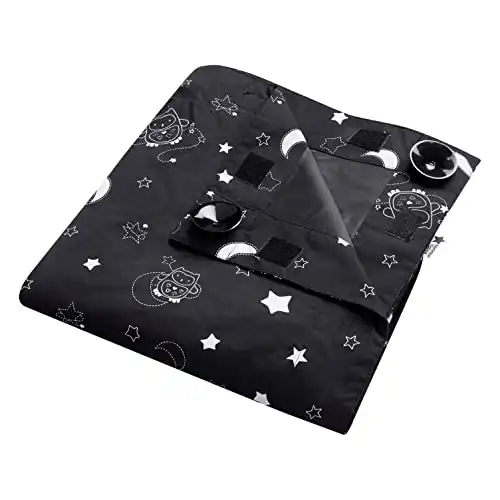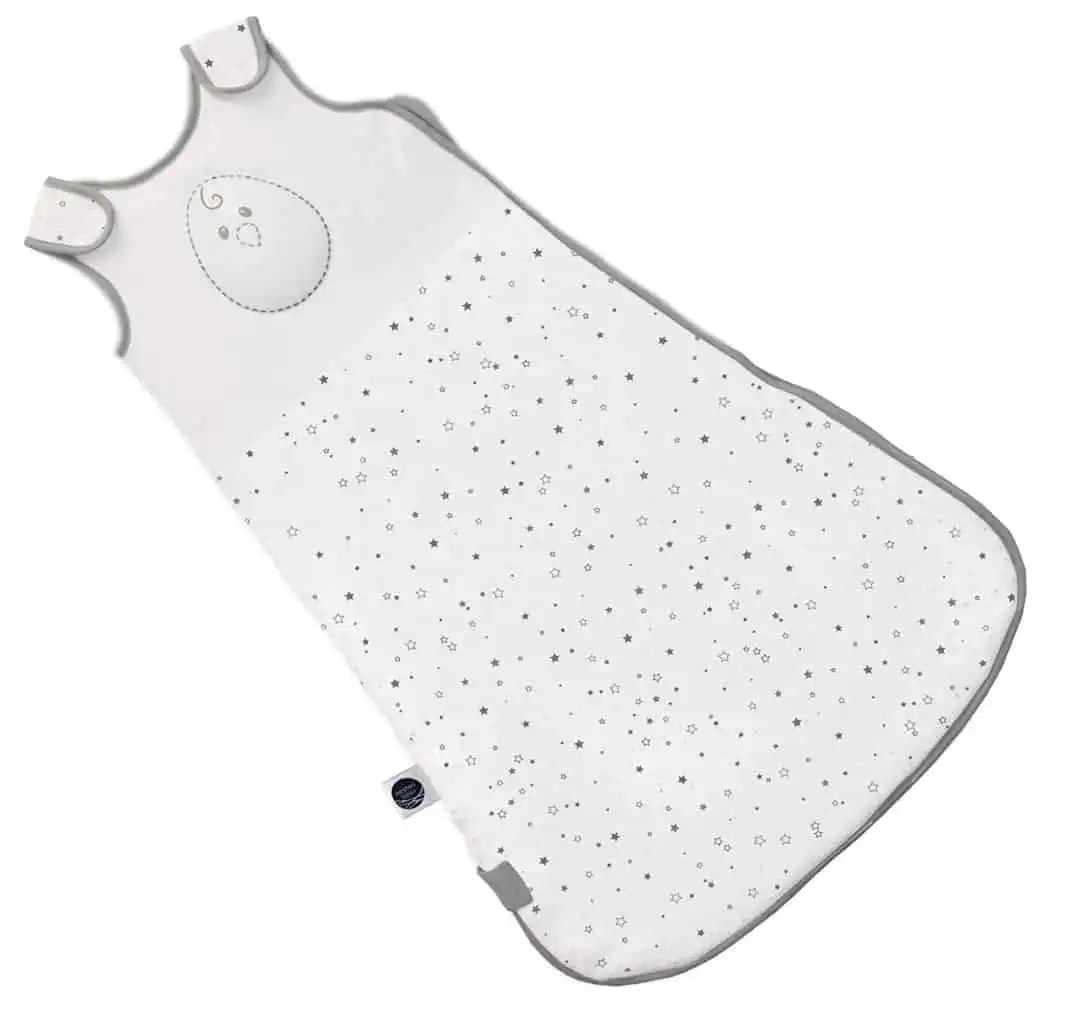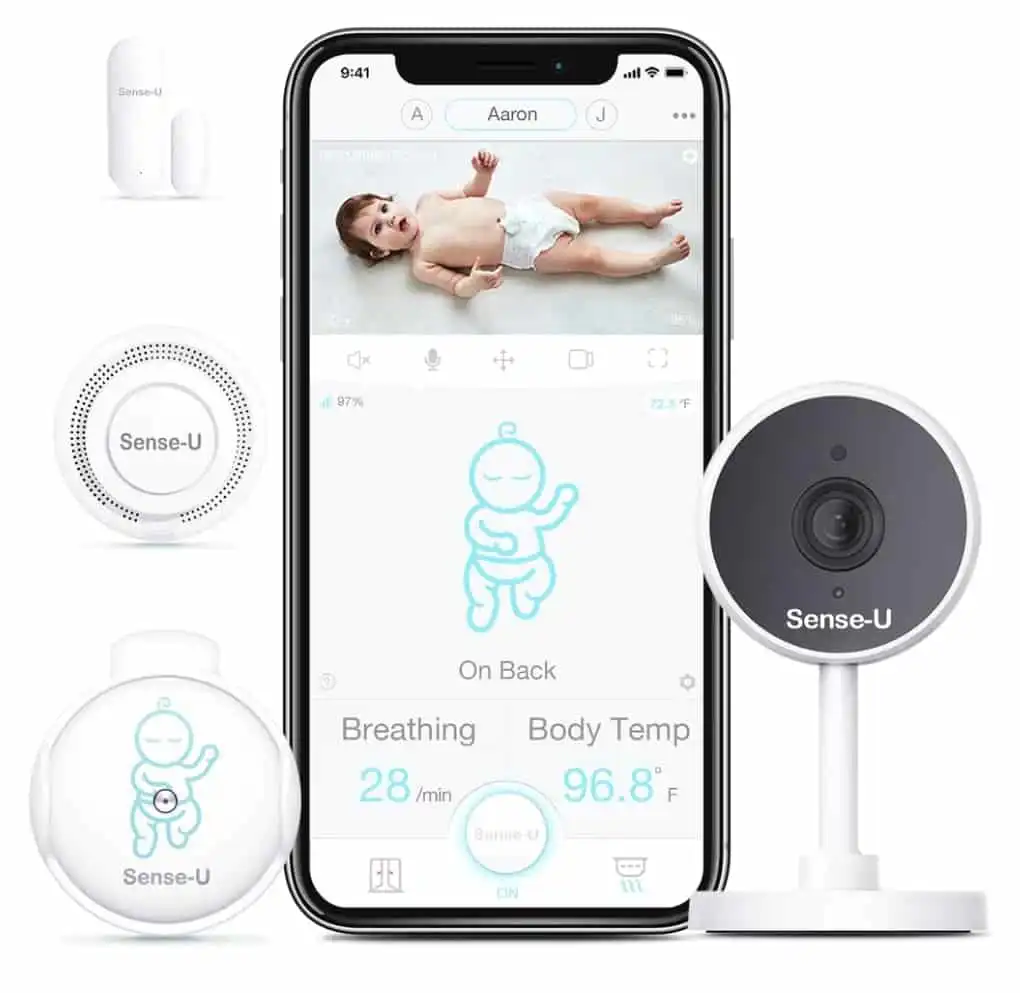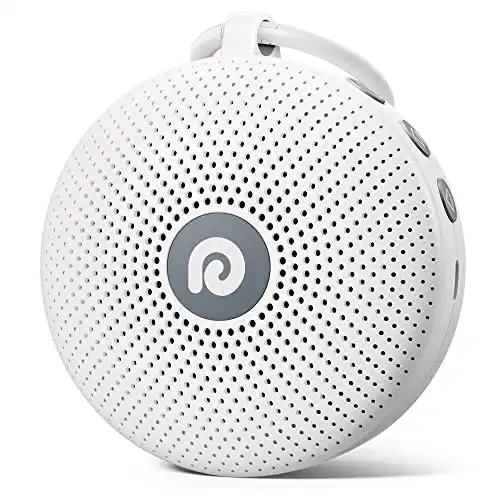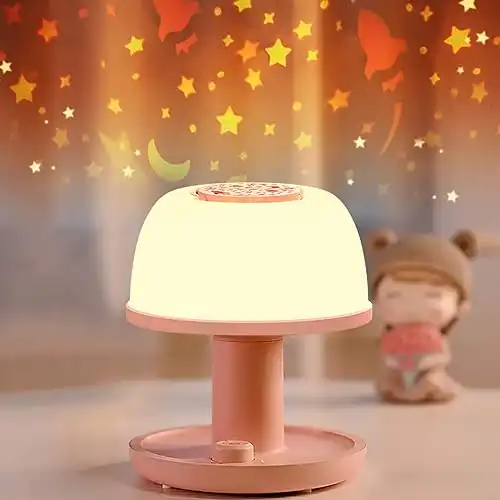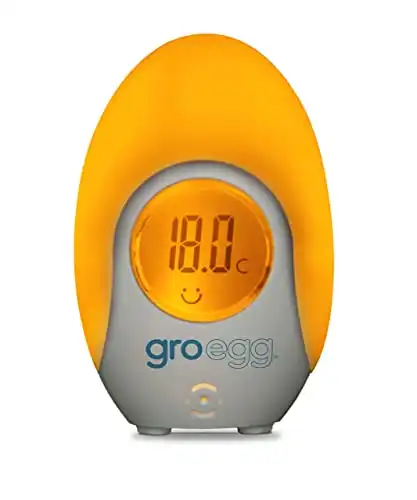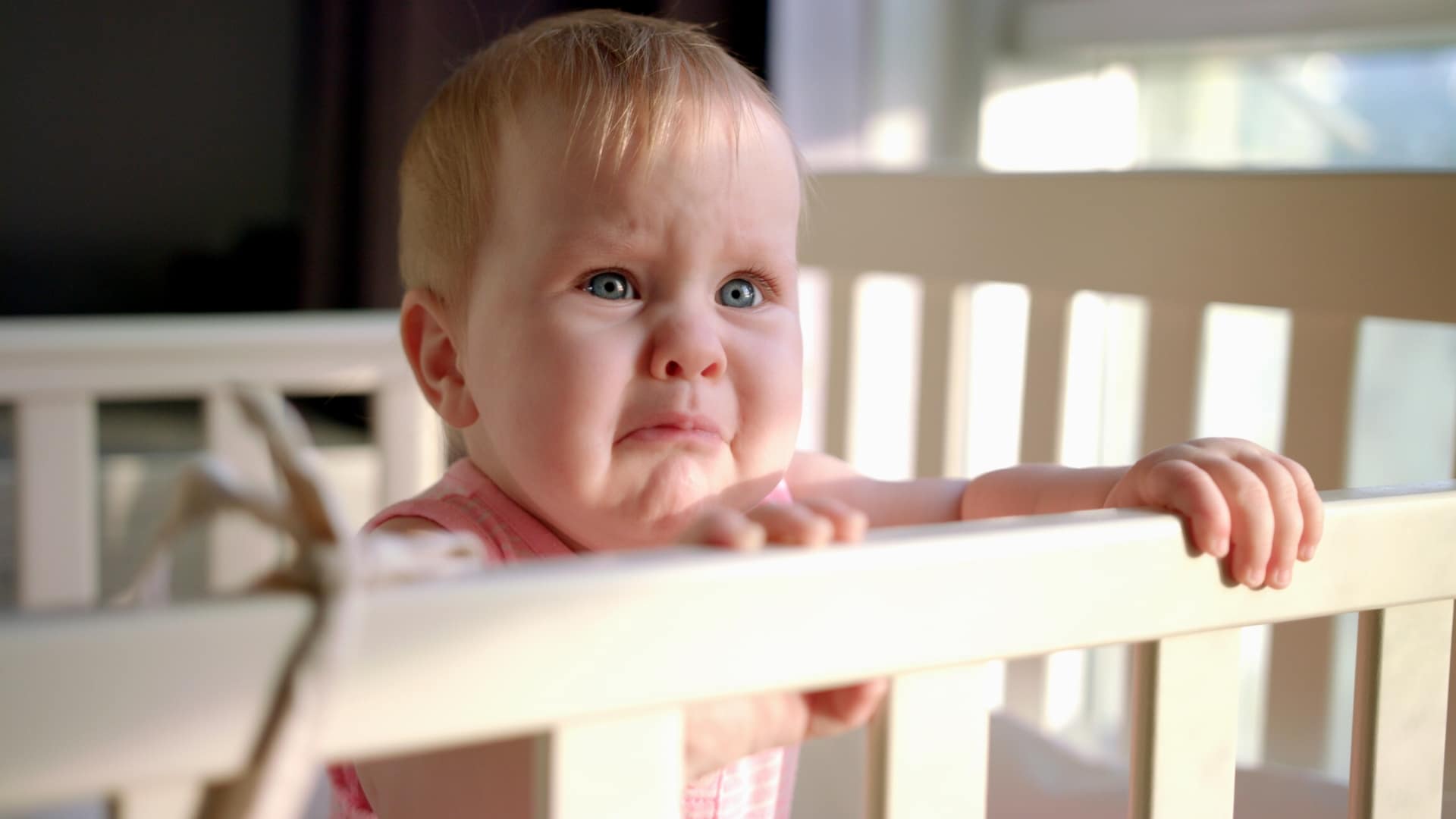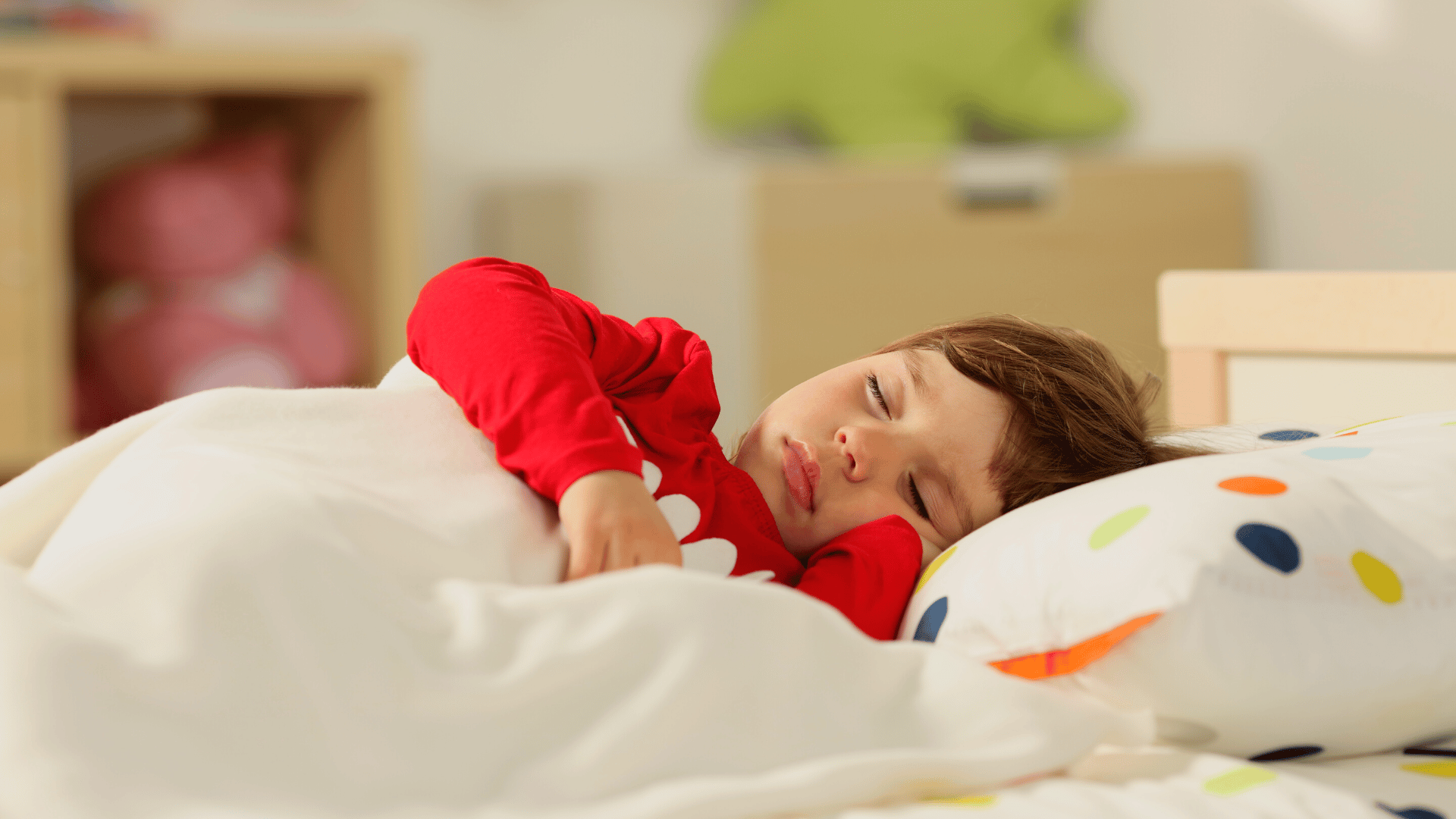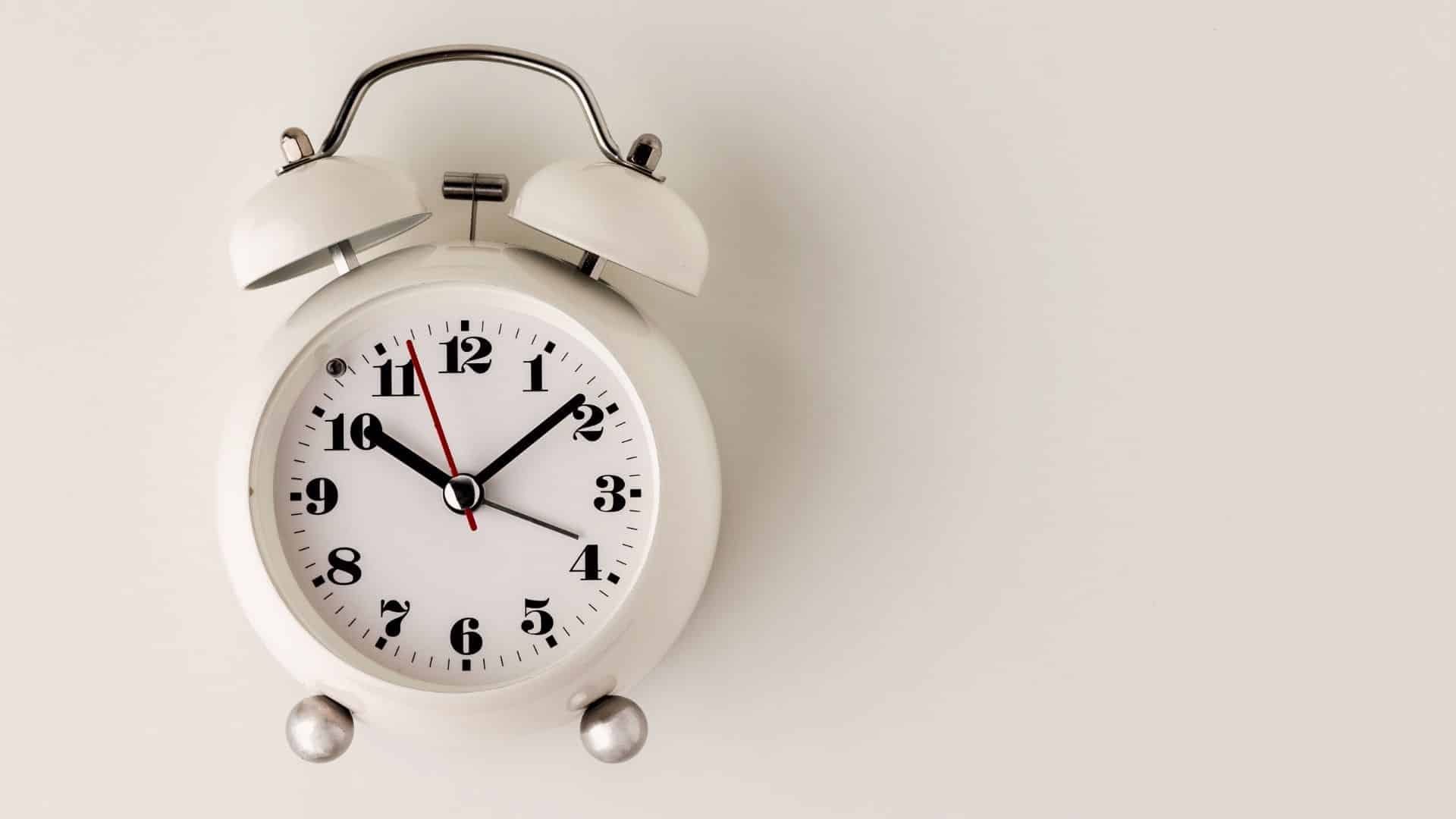Parents often wonder when to move baby to a crib and while there is no one-size-fits-all answer, there are several factors to consider when making the transition. This post will explain what signs to look out for to indicate when baby needs to move as well as address any concerns about changing baby’s sleep space to make the transition as smooth as possible.
When To Move Baby To A Crib
Most babies will move to a crib between 4 months to 6 months of age. However, if your baby is still sleeping peacefully in the bassinet, you may not want to move them… But you will need to keep an eye on the available space and their weight to ensure they’re still in a safe sleep environment.
Signs Baby Is Ready To Move To A Crib
Moving a baby from a bassinet to a crib can be a big transition for both you and your baby.
Knowing the signs to look out for that indicate that your baby is ready to make the move can make the decision to move so much easier.
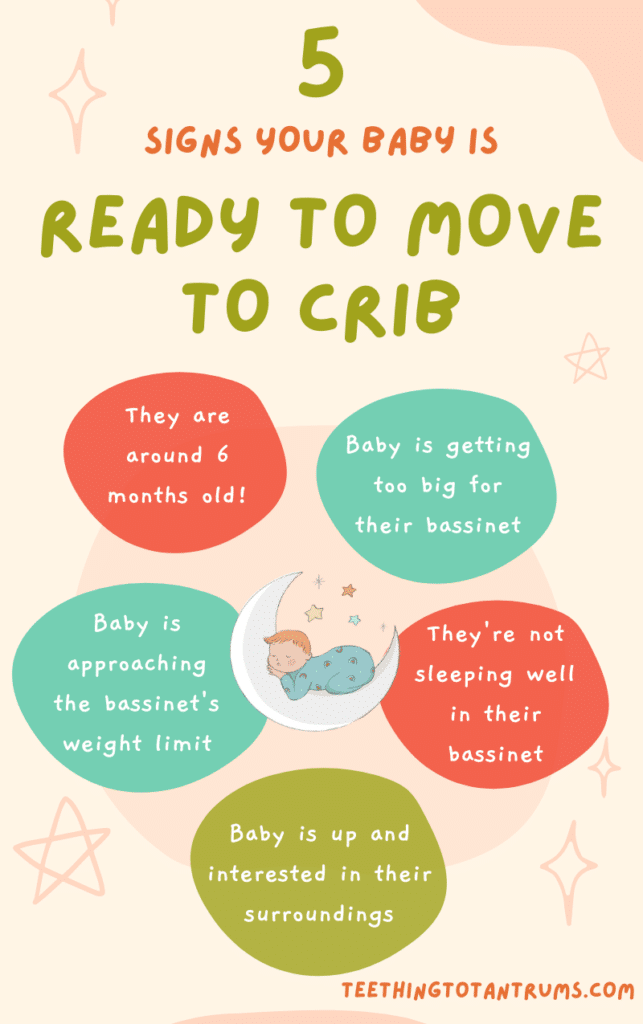
- Age. Most babies are ready to move to a crib at 4 to 6 months old. At this age, they have outgrown the bassinet and need more space to move around. However, it’s important to note that every baby is different, and some may be ready a little earlier or later than others.
- Size. If your baby’s legs are getting longer by the day, they may be feeling cramped in the bassinet and need more room to stretch out. Additionally, if your baby is rolling over or trying to sit up, they may be at risk of falling out of the bassinet, which is a clear sign that it’s time to move to a crib.
- Sleeping Habits. If your baby is not sleeping well in the bassinet, it may be time to transition to a crib. Some babies may be more comfortable in a crib than a bassinet, and the additional space may help them sleep better.
- Interest in Surroundings. If your baby is becoming more interested in their surroundings and trying to look around, a crib may be a better option. The higher sides of a crib provide a safer environment for your baby to explore and play and also give them a larger field of vision.
- Weight Limit. Most baby bassinets have a weight limit of around 15 to 20 pounds so if your baby has reached this weight limit, it’s time to move them to a crib.
As you can see there are several signs that indicate that your baby is ready to move to a crib.
By paying attention to your baby’s age, size, sleeping habits, interest in their surroundings, and weight limit, you can ensure a smooth and safe transition to a crib.
How To Transition From Bassinet To Crib
Transitioning your little one from a bassinet to a crib can be daunting. Here are some tips on how to make the transition as smooth as possible:
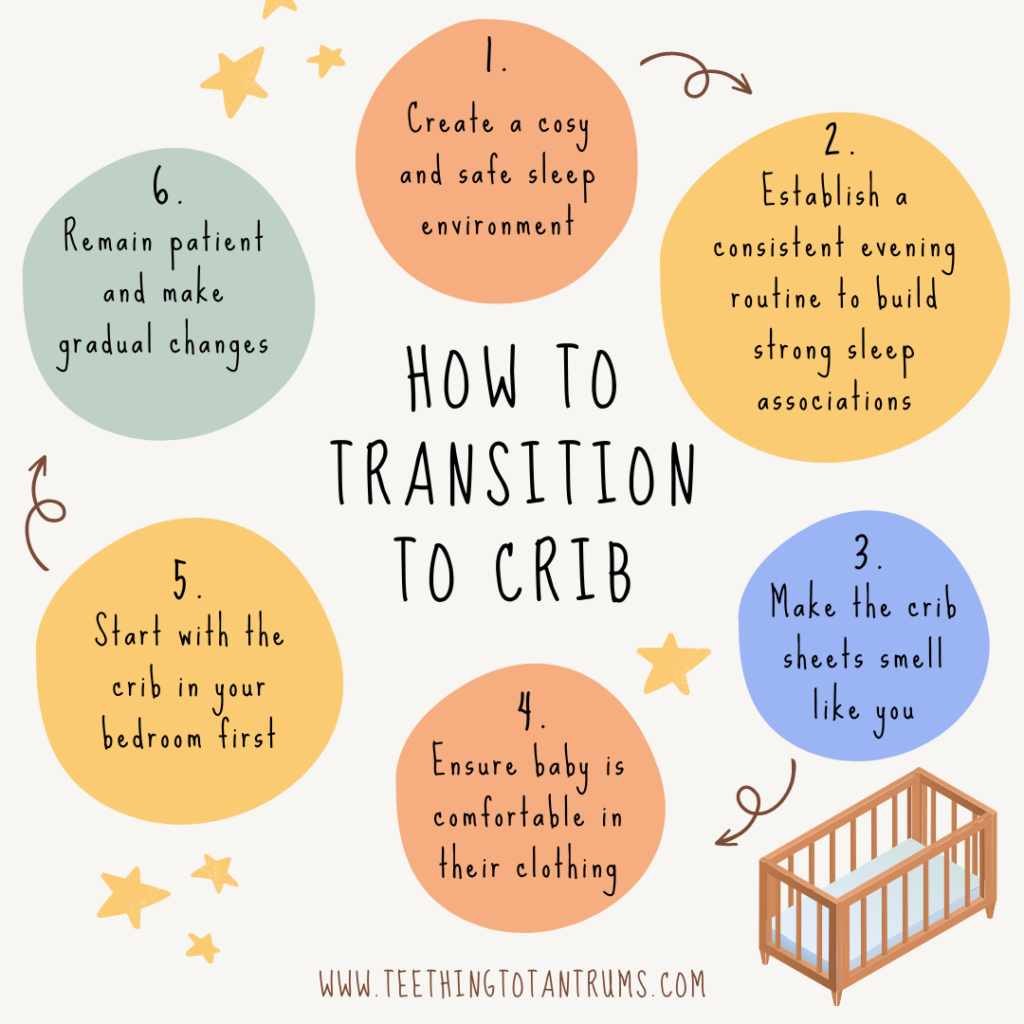
- Create a cosy environment: Make the crib a comfortable and safe sleep environment for your baby. Ensure that the crib mattress is firm and fits snugly in the crib. Avoid using any loose bedding, pillows, or soft toys that could pose a suffocation risk.
- Establish a consistent routine: If you have not yet done so, establish a consistent bedtime routine to help your baby adjust to the new sleep environment. This can include a bath, a story, or a lullaby. Stick to the same routine every night to build strong sleep associations and to help your baby feel secure and comfortable.
- Make the crib smell like you: Help your baby settle in their new crib by sleeping with the crib sheet for a couple of nights so that it has your familiar smell.
- Ensure baby is comfortable: Try using a sleep sack instead of a swaddle to keep your baby warm and cosy.
- Have the crib in your room first: If you have the space put up the crib next to your bed and have the mattress level with your bed so that they can see you. Once they have got used to sleeping in the crib you can then think about moving it into their own room
- Remain patient: It may take some time to transition baby from bassinet to crib. Be patient and continue to provide a consistent sleep routine and a safe and comfortable sleep environment. If your baby is having trouble adjusting, try spending some time in the room with your baby until they fall asleep.
NOTE: By following these tips, you can help your baby transition from a bassinet to a crib with ease. Remember to watch for signs that your baby is ready to move, and be patient as your baby adjusts to the new sleep environment.
Advantages Of Moving Your Baby To A Crib
There are several advantages to having a baby in a crib over a bassinet including longer use, adaptability to a toddler bed, better sleep, and increased safety. To learn more about the advantages of using a crib over a bassinet, read this post: Bassinet Vs Crib: Choosing the Best Sleeping Option for Your Baby.
Looking to get your little one to sleep quickly and effortlessly? Check out my Bedtime and Nap Cheat Sheet and master the art of making daytime naps and bedtimes as seamless as possible.
A bedtime & nap cheat sheet so good your little one will ask you to put them to bed...
Laura Williams "This is a life saver! I'm so glad I downloaded your bedtime & nap cheat sheet. My little one actually asked me to put him to bed last night! Unbelievable! Thank you so much!"
Click Here For The FREE Cheat Sheet
Addressing Parents’ Concerns About When To Move Baby To A Crib
Many parents naturally worry about when to move their baby from a bassinet to a crib. However, by following safety guidelines and understanding what’s appropriate for your baby, moving to a crib is a safe process which will happen smoothly and quickly.
Moving Baby To Their Own Bedroom
Moving your baby to a full-size crib often coincides with moving them to their own bedroom and this is a huge step for both parent and baby.
The American Academy of Pediatrics (AAP) recommends that babies should sleep in a bassinet or crib in the same room as the parents for at least the first six months of life to reduce the risk of Sudden Infant Death Syndrome (SIDS).
After six months, it is safe to move the baby to their own room.
Bear in mind that there is no rush and that you can start by gradually transitioning your baby to their own bedroom in stages (especially if you have been using a bedside sleeper).
Start by putting your baby down for naps in their own room, then gradually increase the time they spend in their room. This helps your little one get used to their new sleep environment and will help to make the transition smoother.
Using a baby monitor to keep an eye on your baby while they sleep can also help you to relax and alleviate any worries you may have about leaving your baby in another room.
Setting Up The Nursery And Healthy Sleep Environment
When transitioning a baby from a bassinet to a crib, it is important to ensure that the nursery is set up for a healthy sleep environment that your little one will grow to love and where they will feel safe and content.
Here are some of my top tips for setting up the nursery and ensuring a safe and cosy sleep space for your baby.
- Use blackout blinds
- Consider using a white noise machine
- Use night lights
- Ensure baby’s room is between 16-21°C or 50-70°F for comfortable and safe sleeping
- Also, ensure that the crib is positioned away from any hazards such as blind cords or strings.
Maintaining a good sleep routine with your baby can be tricky, especially through changing seasons or when you’re away from home! This beautiful blackout blind from Tommee Tippee is made from lightweight premium fabric and completely blocks out daylight, helping to create a dark and sleepy space for baby, no matter where you are!
General Crib Safety
When setting up a crib, make sure that it meets the current safety standards set by the Consumer Product Safety Commission (CPSC).
The crib should have slats that are no more than 2 3/8 inches apart to prevent the baby’s head from getting stuck. And the crib mattress should fit snugly in the crib, with no gaps between the firm mattress and the sides of the crib.
REMEMBER: Use a fitted sheet and never leave soft bedding, bumpers, blankets, pillows, soft objects or leave stuffed animals in the crib. It’s not worth the risk.
Dressing Baby In Appropriate Sleepwear
Dressing your baby in suitable sleepwear for the seasons is very important. Choosing to put baby in a sleep sack or wearable blanket instead of using loose blankets will prevent them from getting tangled in the bedding (dramatically reducing the chance of SIDS (sudden infant death syndrome).
Sleep sacks also come in different tog ratings to keep your little one at the perfect temperature for the time of year. Here are some of my favourites:
Tried and tested Nested Bean Zen sleepwear is always an excellent choice. From easy-to-use swaddles and functional sleepsacks, their patented design has proven to help babies sleep better and you will certainly be grateful that you chose this range of sleep wear for your little one!
Baby Monitors?
Sound-only or video baby monitors are the perfect way to provide you with peace of mind while your baby is sleeping. However, it is important to remember that monitors do not replace adult supervision. Here is one of my favourites right now:
Unique easy to set up and use baby monitoring system. It even tells you what position your baby is sleeping in and monitors baby's heart rate and temperature. Comes with an easy to use App that connects to your phone with an excellent working range.
White Noise Machines?
For me, white noise machines are essential. They can help soothe a baby to sleep by creating a calming environment and so much more with some having options to play lullabies and include night lights.
Choose a machine that has a variety of sounds and volume settings. Place the machine away from the crib and set it to a low volume to prevent hearing damage.
White noise machines are a game-changer for your little one's sleep and having one that plays all night is a must. With a long-lasting battery, this compact and stylish white noise machine contains 21 non-stop relaxing noises, which will lull your little one to sleep night after night, no matter where you are!
Nightlights?
A dim nightlight can provide enough light for parents to check on their baby without disturbing their sleep. Choose a nightlight that emits a soft, warm light and is placed away from the crib to prevent the baby from staring directly at the light.
By following these tips, you can create a safe and healthy sleep environment for your little one in their new crib which help to make the transition that much smoother for your both.
Finding the right night light for your child can be quite a task. You want something safe, comforting, and practical. The Cozy Starry Night Light ticks these boxes, with eye-friendly warm lighting and an easy-to-use dimmer.
Its gentle glow makes it the best night light for feeding baby, diaper changes, or comforting your little one back to sleep.
As your baby grows the Cozy Starry Night Light's starry sky projection can provide comfort and gentle quiet time stimulation. Its soft lighting ensures a dreamy, peaceful environment, supporting your baby’s natural sleep cycle.
It really is a fantastic nightlight (at a very reasonable price!)
- Eye-friendly warm lighting with adjustable brightness.
- Includes a timer function for convenience.
- Projects a starry sky that is soothing for little ones.
- Rechargeable battery, so it's very portable.
- A USB adapter is not included for charging.
- The star projector is static without motion (however, this is ideal for very young babies and toddlers).
- Battery life varies based on the brightness settings.
Room Thermometer?
It is important that your baby’s room is at the correct temperature for sleeping. Having a room thermometer will ensure that you know how best to dress your little one for sleep and whether they need a fan or an open window in hot weather.
The American Academy of Pediatrics (AAP) does not provide a specific temperature range for the baby’s bedroom. Instead, they recommend dressing your baby in clothing that is appropriate for ambient temperatures.
However, a room between 16-21°C or 50-70°F is usually ideal for babies.
Offering peace of mind at a glance, the wonderful GRO-Egg changes colour with the temperature of a room. A yellow glow means a safer temperature for children to sleep in which also doubles up as a gentle nightlight for your baby!
Frequently Asked Questions About When To Move Baby To A Crib
Looking for more information about when to move baby to a crib and how to do it safely? Here are the answers to the most commonly asked questions.
What Age Should You Move A Baby To A Crib?
When it comes to transitioning a baby from a bassinet to a crib, there is no one-size-fits-all answer. However, most babies are ready to move to a crib around the six-month mark.
How Long Should Baby Sleep In Your Room?
The American Academy of Pediatrics recommends that parents have their baby sleep in their room for at least the first six months, and up to one year if they wish, to reduce the risk of Sudden Infant Death Syndrome (SIDS).
Is 4 Months Too Early To Move Baby To Crib?
Yes and no. If baby is ready, 4 months is not too early for baby to move into a crib. It is important to make sure that the baby is able to roll over both ways and has good head control before transitioning to a crib.
Can I Put My Baby In His Own Room At 3 Months?
No, it is not recommended to put a baby in their own room at 3 months.
How Long Can Baby Sleep In Pack And Play Bassinet?
Most pack and play bassinets have a weight limit of 15 to 20 pounds, or when the baby begins to push up on their hands and knees. It is recommended to transition the baby to a crib when they reach this weight or developmental milestone.
When Should I Not Move Baby To Crib?
Try to avoid moving your baby to a crib when big life events coincide. These could be going through a sleep regression, moving house, going on holiday or teething.
Too many changes at once will distress baby and you run the risk of them creating negative associations with their crib.
However, if baby is getting too big for their bassinet, you may have to make the change regardless to keep them safe. After all, baby’s safety always comes first.
Need More Parenting Help?
- Download our FREE Perfect Sleep Cheat Sheet. It’s a free, easy-to-use and proven formula designed for parents of 0-5 year olds to master the art of consistently undisturbed and restful sleep without the yelling, nagging or exhausting long-winded evenings.
- Check out our Parenting Toolbox. You’ll get access to expertly-chosen products that you can guarantee are the best for your little one and your wallet.
- Ready to create the calm, peaceful evenings you deserve? Then checkout our most popular course - The Bedtime Battles Masterclass

A bedtime & nap cheat sheet so good your little one will ask you to put them to bed...
Laura Williams "This is a life saver! I'm so glad I downloaded your bedtime & nap cheat sheet. My little one actually asked me to put him to bed last night! Unbelievable! Thank you so much!"
Click Here For The FREE Cheat Sheet
